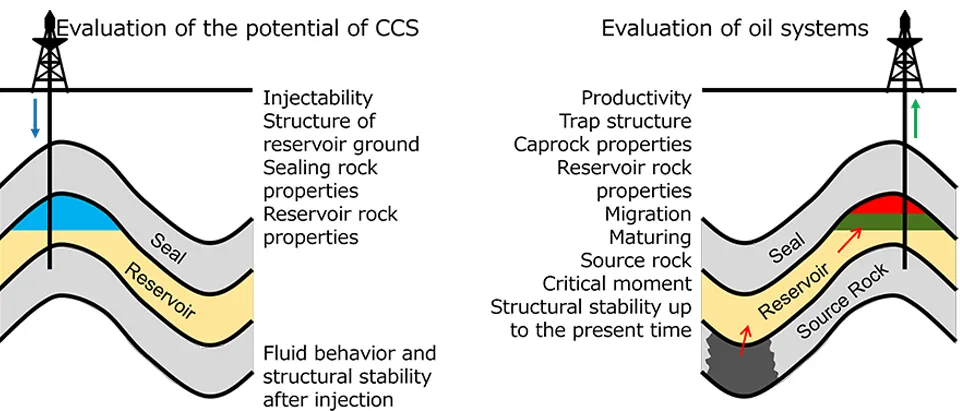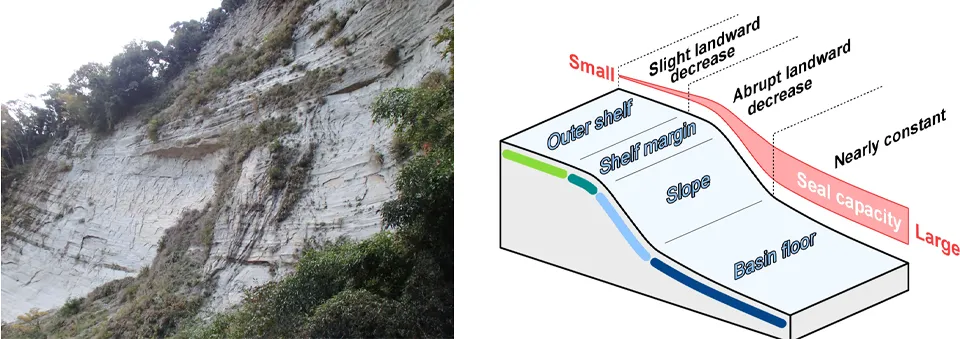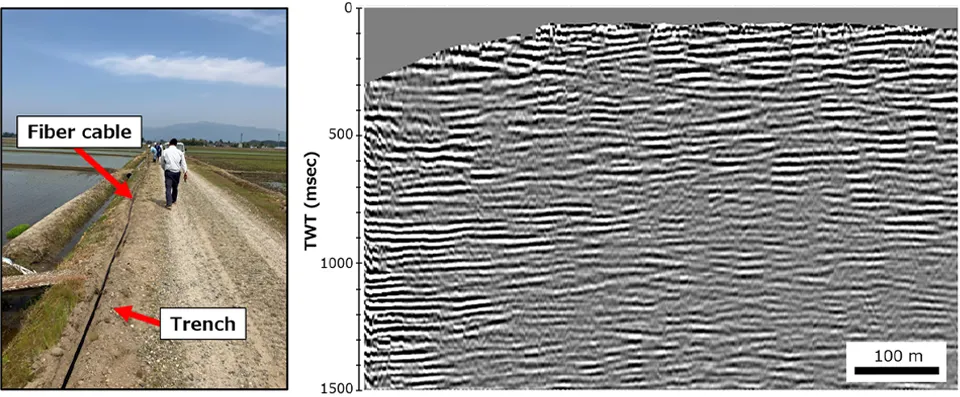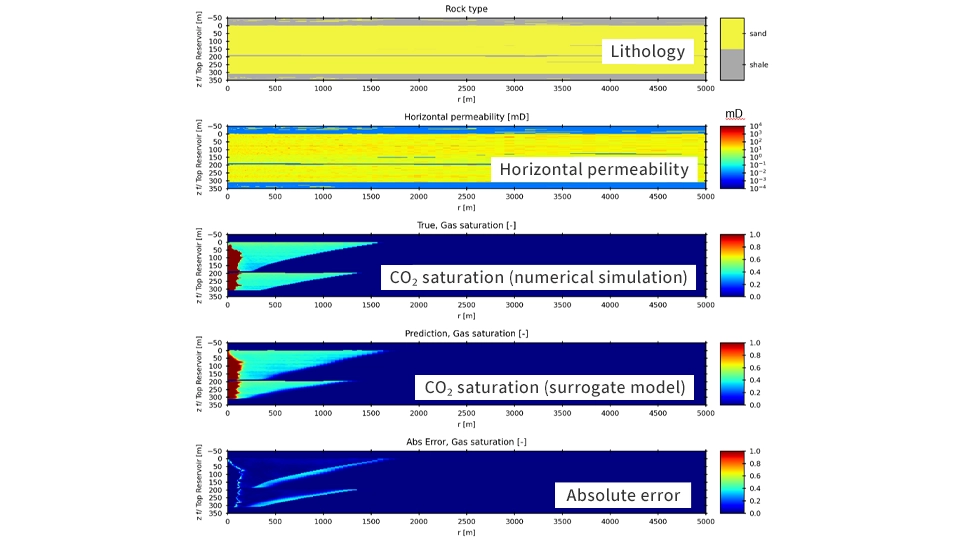Evaluation of potential storage sites
Carbon dioxide Capture and Storage (CCS) is one of the technologies contributing to the mitigation of global warming. It involves capturing carbon dioxide (CO2) produced from fossil fuel use and other sources and injecting it underground.
Safe and efficient CO2 storage requires an appropriate distribution of rocks that are permeable and easy to inject fluids into, such as sandstone (reservoir rock), as well as dense rocks like mudstone (caprock) that play a role in preventing the injected CO2 from leaking back to the surface. These combinations share many similarities with the conditions necessary for Oil and gas fields.
Therefore, in selecting suitable storage sites, we can apply the geological and geophysical techniques and reservoir engineering technologies that we have developed through Oil and gas exploration and development projects. Using these technologies, we are advancing the selection of potential storage sites and conducting detailed technical evaluations of such potential sites globally.

Research and development of subsurface evaluation technologies
INPEX is conducting joint research with universities and research institutions in the fields of geology, geophysics and reservoir engineering to achieve safer and more efficient subsurface CO2 storage. The following are some examples:
Geology: Determining caprock properties
The presence of a caprock capable of retaining injected CO2 is essential for safe subsurface CO2 storage. However, due to limited subsurface data, there are uncertainties in evaluating subsurface caprocks. Therefore, we are conducting research to reveal detailed spatial changes in the properties of mudstones that serve as caprocks by studying onshore outcrops (Nifuku et al., 2024). The results of this research are expected to reduce uncertainties in subsurface evaluations of potential storage sites.

Geophysics: Development of monitoring technology using optical fibers
For the safe operation of subsurface CO2 storage projects, it is necessary to continuously monitor subsurface conditions, such as the distribution of injected CO2. Distributed Acoustic Sensing (DAS) technology, which uses optical fibers as sensors, has recently garnered attention as a technology that enables long-term data measurement at low cost. INPEX has been developing subsurface monitoring technology using DAS since 2016. In recent years, we have been verifying subsurface monitoring methods using optical fibers installed on the surface (Kono et al., 2024; Naruse et al., 2024).

Reservoir Engineering: Development of surrogate models based on machine learning
Predicting subsurface conditions, including the distribution of injected CO2 and changes in subsurface pressure, is crucial for evaluating potential storage sites and optimizing operation plans. Since information on deep subsurface areas targeted for injection is limited, it is important to evaluate uncertainties by considering multiple hypothetical scenarios. However, conducting numerous, large-scale numerical simulations is time-consuming and practically challenging. Recently, the development of machine learning-based surrogate models to replace numerical simulations has been progressing. INPEX has developed a surrogate model capable of reproducing subsurface conditions in more detail compared to previous studies (Yamamura et al., 2024). This model is being utilized in our evaluations of potential storage sites.

Reference
Kono, A., Naruse, R., Masaya, S., Kobayashi, Y., 2024. Subsurface imaging by P-wave reflection seismic survey using surface deployed DAS measurement, onshore Japan. 6th Asia Pacific Meeting on Near Surface Geoscience & Engineering.
Naruse, Y., Kobayashi, Y., 2024. Availability of P-S converted wave imaging for the DAS active seismic reflection data acquired with surface deployed optical fibers. 4th EAGE Workshop on Fiber Optic Sensing for energy Applications.
Nifuku, K., Watanuki, S., Iijima, Y., Kobayashi, Y., Ito, M., 2024. Toward reducing uncertainty in caprock assessment: Insights from an outcrop analogue. 3rd EAGE Conference on Carbon Capture & Storage Potential.
Keisuke Yamamura, Hiroki Hayakawa, Yuki Kobayashi, 2024. Development of a deep learning-based surrogate model and web application for efficient evaluation of CCS Projects. Fiscal Reiwa 6 (2024) spring conference of the Japanese association for petroleum technology.